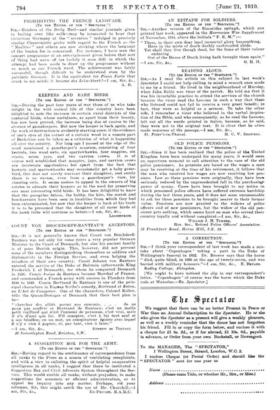KEEPERS AND RARE BIRDS.
[To THE EDITOR OF THE " SPECTATOR."] SIR,—During the past four years of war those of ue who take delight in the wild animal life of this country have been delighted to note the increase in certain rural districts of the raptorial birds, whose usefulness, as apart from their beauty, has now been proved, the increase being due of course to the absence of gamekeepers. But now the keeper is back again, and the work of destruction is evidentlystarting anew, if the evidence of one's eyes at the corner of a certain wood in a remote part of Berkshire can be taken as a criterion of what is happening all over the country. Not long ago I passed at the edge of the wood mentioned a gamekeeper's .museum, consisting of four kestrels, two wood owls, six sparrowhawks, four magpies, six stoats, seven jays, and two carrion crows. It is of course well established that magpies, jays, and carrion crows are inveterate egg-stealers; but apart from the fact that kestrels and sparrowhawks may occasionally get a baby game- bird, this does not surely warrant their slaughter, and surely there is no excuse, even from a gamekeeper's view, for shooting owls. It seems useless to appeal to the owners of big estates to educate their keepers as to the need for preserving our most interesting wild birds. It has been delightful to know that the peregrine falcon, the hobby, the kite, the marsh and hen-harriers have been seen in localities from which they had been exterminated, but now that the keeper is back at his trade it is to be presumed that the slaughter of all rarer birds of the hawk tribe will continue as before.—I am, Sir, &c., LOOSESTRIFE.






































 Previous page
Previous page